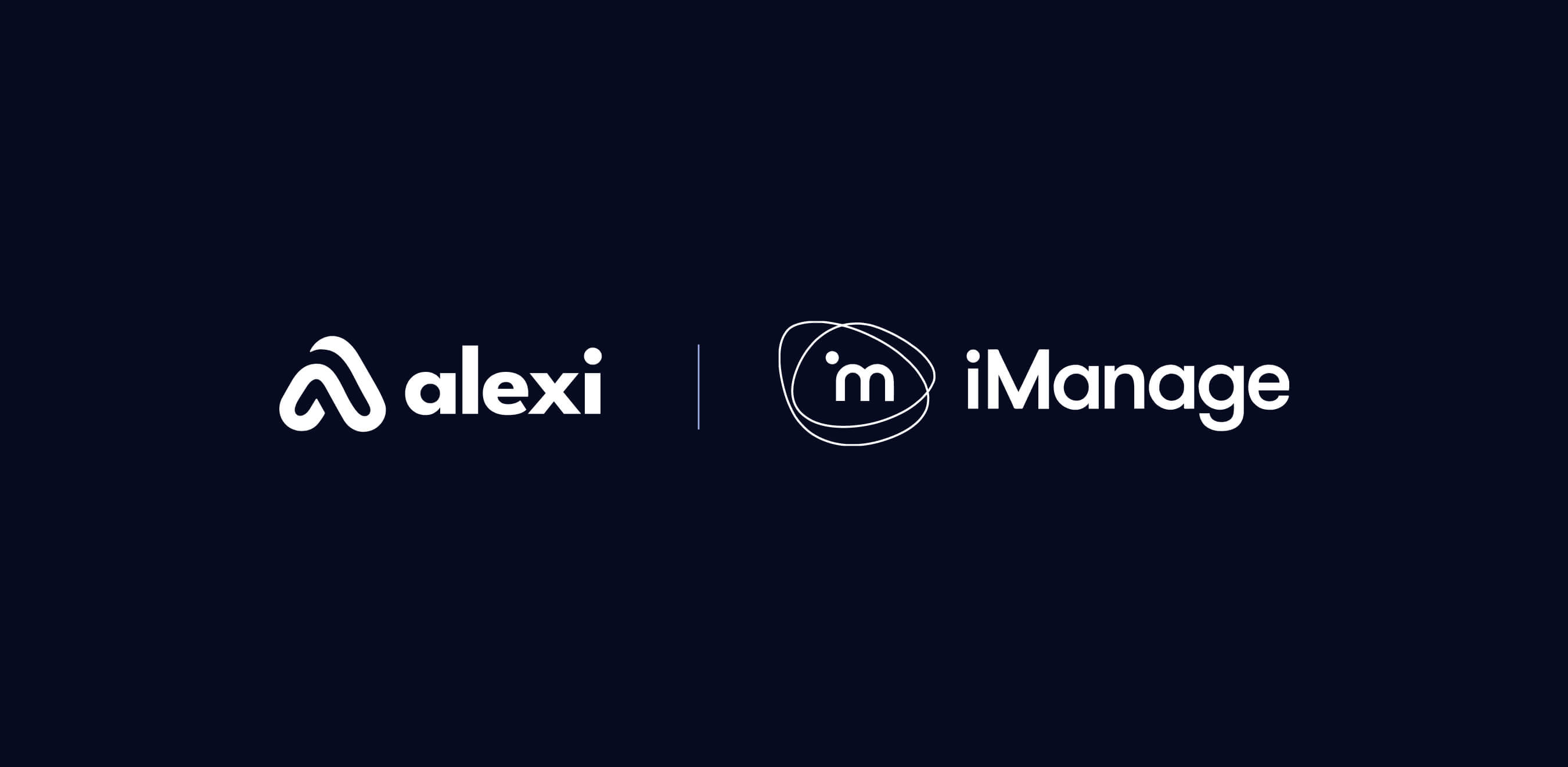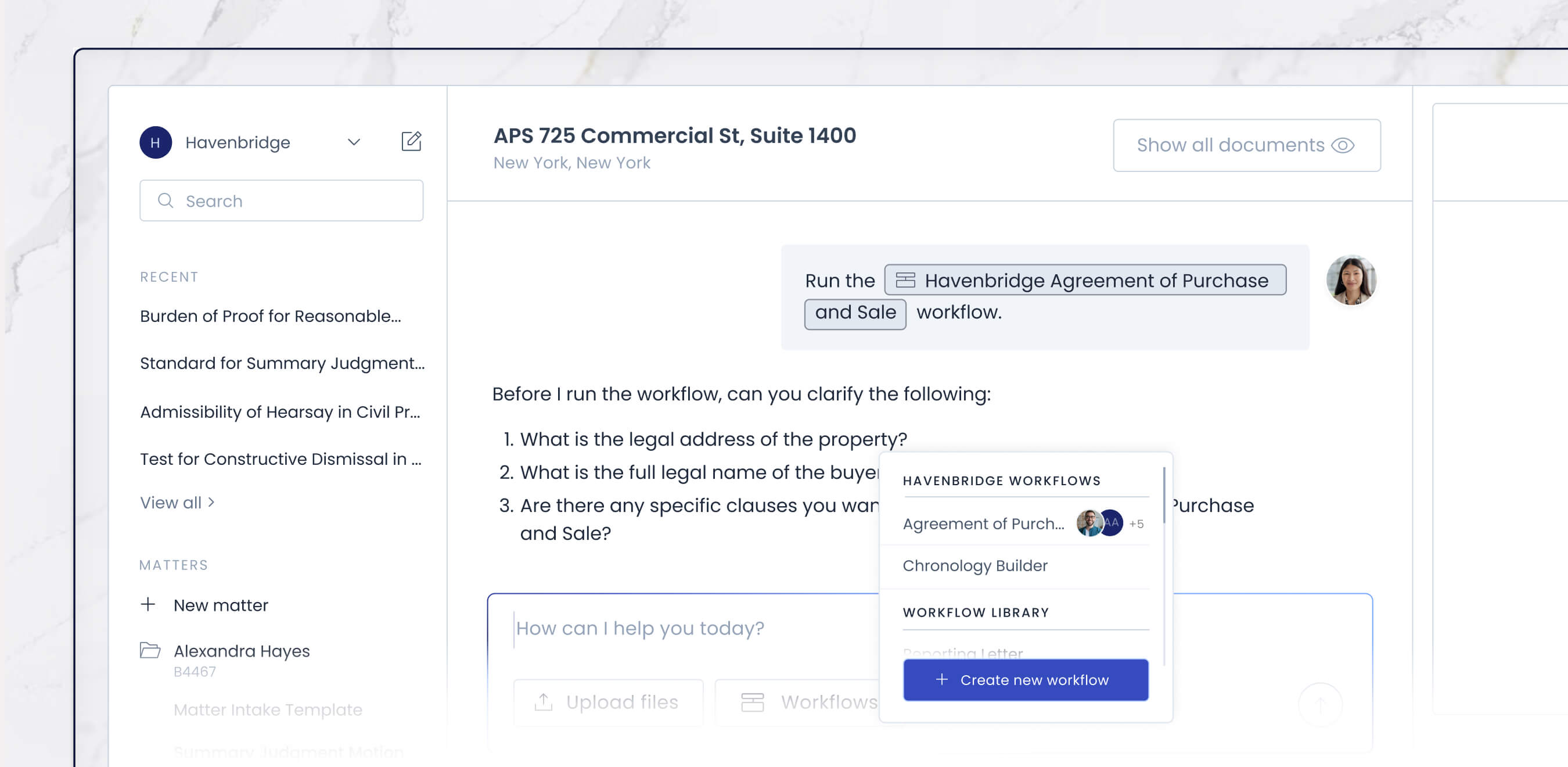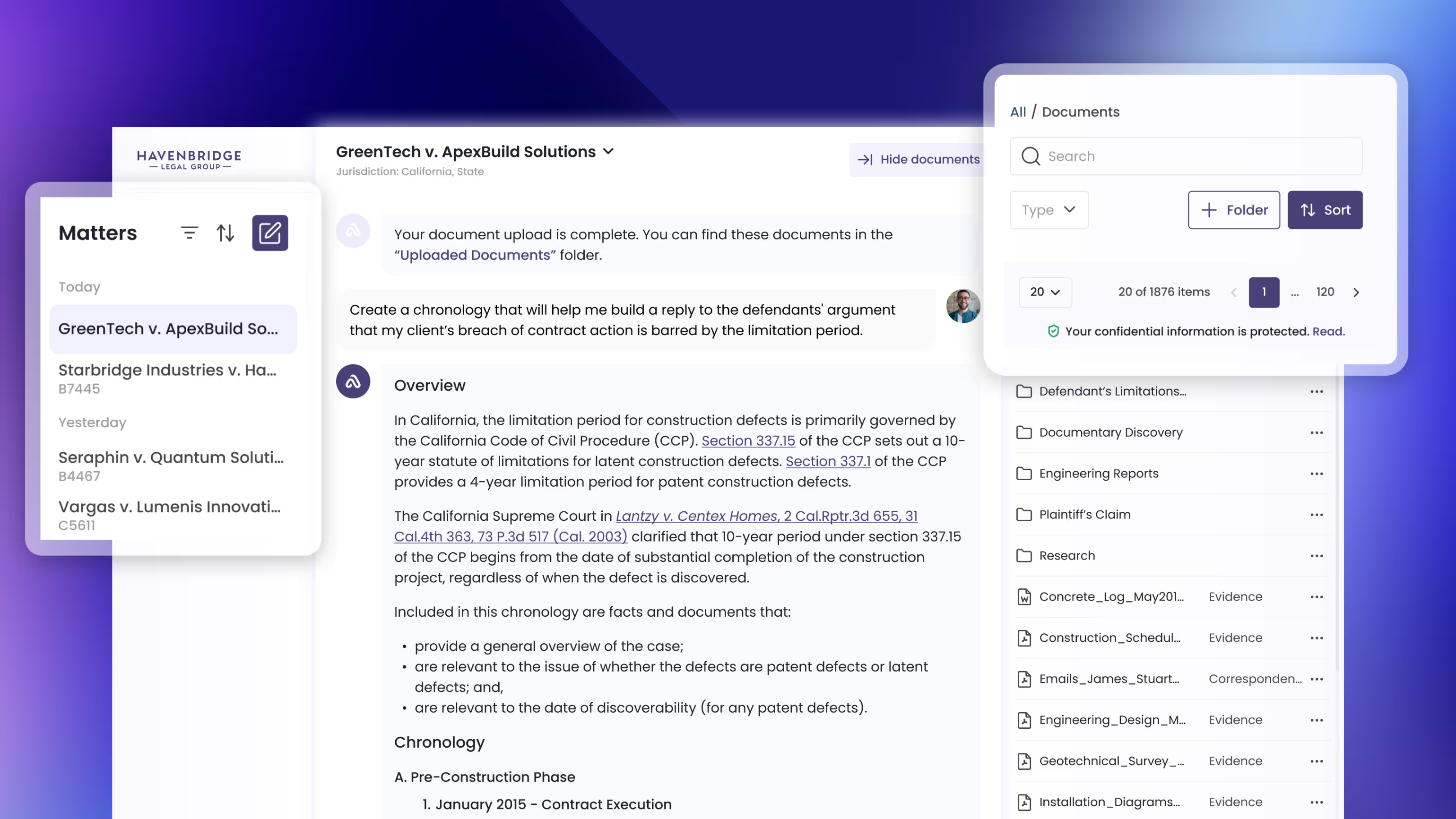.jpeg)
The stark reality is that AI in legal is here, whether you’re ready or not – so, now what?
Artificial intelligence has been the talk of all industries, and legal is no exception. The question is no longer if the legal industry will adopt it, but how. It’s already changing the infrastructure of leading law firms for the better – and underscoring the firms that are falling behind in innovation.
As a technology leader, your priority is to keep the firm competitive through smart technology decisions. In today’s landscape, AI must be a part of that conversation. It means making decisions about how AI is implemented and scaled – setting the pace, rather than reacting to it.
In this blog, we’ll outline what adopting AI as a part of your tech stack could look like, and how to approach deployment so AI is set up for long-term success at your firm.
Legal AI Isn’t Plug & Play
AI won’t be just another tool that you install and forget. It demands intentional implementation to deliver real value. That means planning for how it fits operationally, managing permissions, ensuring it works seamlessly with existing systems, and controlling how it accesses and uses data.
What that means for CTOs, IT leads, and other technology leaders is that you’ll be on the front lines of implementation and integration.
How to Evaluate Legal AI Against Your Tech Stack
AI doesn’t exist in a vacuum. It will rely on, interact with, and even reshape your underlying technology stack. Here are the main things to consider:
Data Strategy
Legal AI will only work as good as the data it has access to, so ensure your firm’s data is clean, structured, and central. In other words, past memos, case law, templates, and more are organized, documented in one place (rather than siloed or fragmented in several places), and consistent. Assessing your firm’s data readiness is the first step in adopting AI.
Security & Privacy
It’s no secret that legal work requires the highest degree of security. AI, while its benefits are invaluable, also introduces a number of risks if implemented carelessly. Client information shared in prompts is confidential and privileged, so the right AI deployment is necessary; and for law firms, the ideal options are on-prem or private cloud.
Interoperability
You don’t need a siloed tool that’s going to disrupt your workflows and processes. You do need a tool that can pull from your knowledge management platform and/or document management system, and use that information to generate accurate outputs.
User Access and Permissions
As with any organization, not everyone at your law firm will need the same level of access to AI. Governance is critical; who can access what? Can junior lawyers use it unsupervised? These questions, and more, will need to be considered. You’ll need to map out roles, access levels, and audit trails across the firm.
Strategy, Strategy, Strategy
With AI, the name of the game is strategy. AI should be aligned with your broader firm goals, enabling long-term success and scalability through productivity, security, and innovation. Done right, it can drive firm-wide efficiency and give your firm a lasting competitive edge.
Start the Conversation
Legal AI brings real opportunities to strengthen how your firm operates – but it requires thoughtful alignment across your infrastructure.
For legal tech leaders, this means evaluating how your systems handle data, security, integration, and scale. It’s about ensuring your architecture can support tools that interact seamlessly with your document and knowledge management platforms, respect governance protocols, and enable meaningful efficiency across teams.
A good starting point: begin internal conversations about infrastructure readiness, deployment models, and integration priorities. Work with innovation and legal ops teams to map out where AI fits into your broader tech strategy.



.avif)





.avif)


%2520(1).jpeg)


.avif)

.avif)
.avif)



.avif)
.avif)


.avif)
.avif)



.avif)

.avif)






.avif)


-min%25252520(1).avif)























